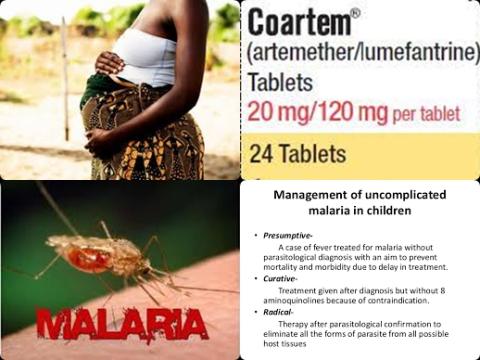
Objectives:
The fixed dose combination of artemether-lumefantrine (AL) is the most widely used treatment for uncomplicated Plasmodium falciparum malaria. However, lower cure rates and lumefantrine exposures have been reported in children below 5 years of age and pregnant women during their second and third trimester.
The aim of this study is to investigate the pharmacokinetic and pharmacodynamic properties of lumefantrine and the pharmacokinetic properties of its metabolite, desbutyl-lumefantrine, in order to inform optimal dosing regimens in children below 5 years of age and pregnant women during their second and third trimester.
Study design:
This review article included 26 relevant clinical studies published between 1 January 1990 and 31 December 2012, with 4,122 patients in whom lumefantrine concentrations were measured.
The developed lumefantrine population pharmacokinetic model was used for dose optimisation through in silico simulations.
Results and conclusions:
The investigators found venous plasma lumefantrine concentrations 7 days after starting standard artemether-lumefantrine (AL) treatment were 24.2% and 13.4% lower in children weighing 15 kg and 15-25 kg, respectively.
The investigators found venous plasma lumefantrine concentrations 7 days after starting standard artemether-lumefantrine (AL) treatment were 20.2% lower in pregnant women compared with non-pregnant adults.
The investigators found lumefantrine exposure decreased with increasing pre-treatment parasitaemia and the dose limitation on absorption of lumefantrine was substantial.
The investigators found simulations using the lumefantrine pharmacokinetic model suggested that, a dose increase for pregnant women in their second and third trimester (100 mg artemether and 600 mg lumefantrine twice daily for 3 days, i.e., 1 extra tablet per dose) did not result in equivalent lumefantrine concentrations at day 7 compared to a non-pregnant adult population receiving the standard dose.
However, the intensified dosing regimen (standard dose at 0, 8, 16, 24, 32, 40, 48, 56 and 64 hours) resulted in similar lumefantrine concentrations at day 7 compared to a non-pregnant adult population receiving the standard treatment (twice daily for 3 days).
An extended dosing regimen (standard dose twice daily for a total 5 days) displayed the highest probability of target attainment, with >75% of the simulated lumefantrine concentrations at day 7 above the mean lumefantrine concentration at day 7 in a non-pregnant adult population receiving standard treatment.
The investigators found simulations using the lumefantrine pharmacokinetic model suggested that, a dose increase for children weighing between 5 kg and 25 kg (lumefantrine doses: 120 mg for children 5-6 kg, 180 mg for children 7-8 kg, 240 mg for children 9-13 kg, and 360 mg for children 14-23 kg, twice daily for 3 days) did not result in equivalent lumefantrine concentrations at day 7 compared to children weighing between 5 kg and 25 kg receiving the standard dose (twice daily for 3 days).
The investigators concluded that in young children and pregnant women beyond the first trimester, lengthening the dose regimen (twice daily for 5 days) and, to a lesser extent, intensifying the frequency of dosing (3 times daily for 3 days) would be more efficacious than using higher individual doses in the current standard treatment regimen (twice daily for 3 days). However, these findings should be evaluated in prospective clinical studies to determine whether they would improve cure rates, demonstrate adequate safety and thereby prolong the useful therapeutic life of this valuable antimalarial treatment.
Original title:
Artemether-lumefantrine dosing for malaria treatment in young children and pregnant women: A pharmacokinetic-pharmacodynamic meta-analysis by Kloprogge F, Workman L, […], Tarning J.
Link:
https://www.ncbi.nlm.nih.gov/pmc/articles/PMC5997317/
Additional information of El Mondo:
Find more information/studies on food fortification/malnutrition right here.